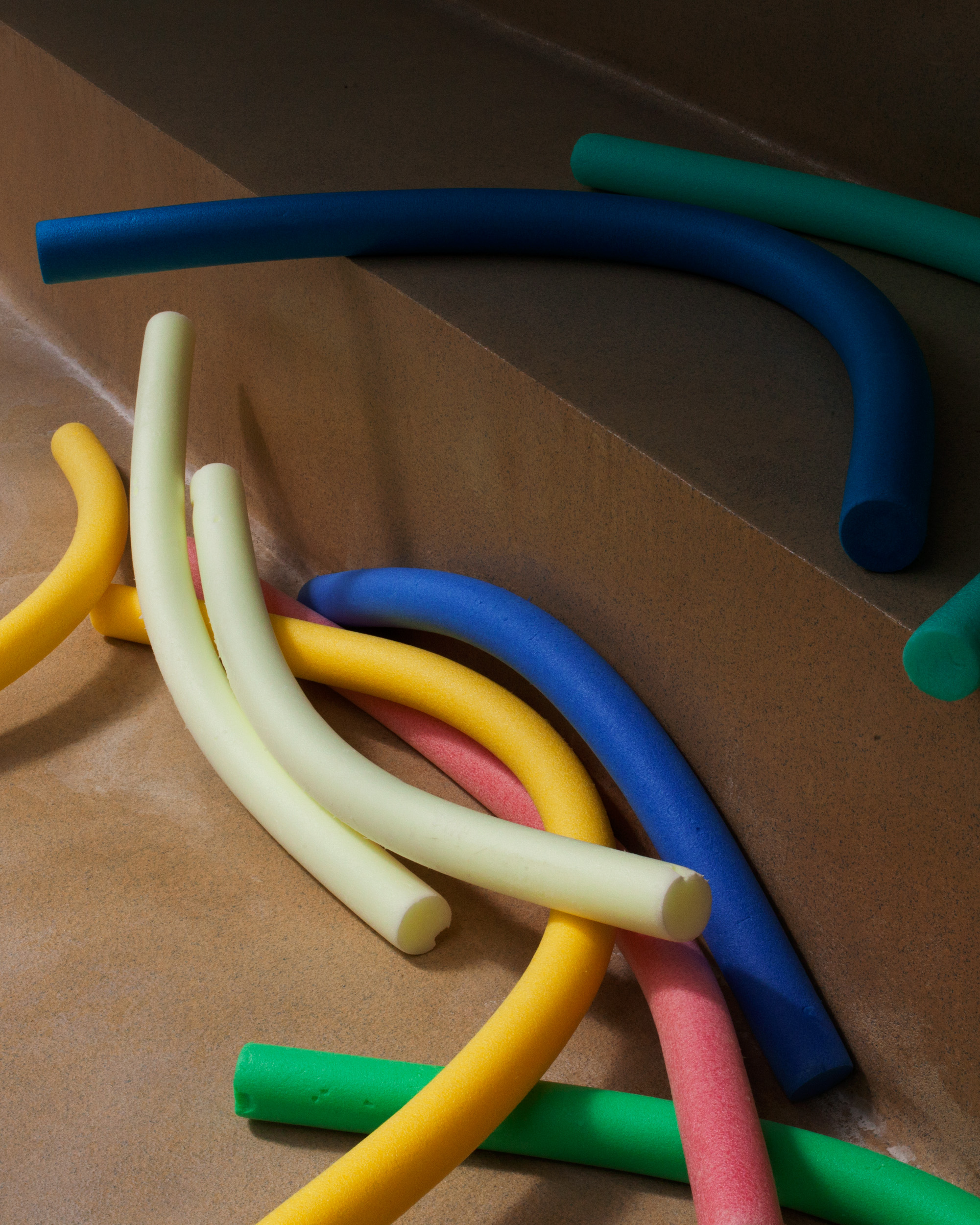interview: Mickey Aloisio
Self Portrait with Christopher (2019)
Queens-based artist Mickey Aloiso’s most recent photography project From Europe, With Love is informed by two of his earlier projects, Gay Wildlife and American Wildlife, which captured Aloisio’s experiences meeting gay men in his home city of New York and on the West Coast. Adopting a similar format, From Europe, With Love moves through the queer communities of some of Europe’s largest cities. Aloisio’s photography displays classically conceptualized yet bizarre images that subvert our conventions of beauty, sexuality—and Instagram photos.
Note: the following series is NSFW.
The scenes in your photographs appear very performative. How are they constructed? Do you have a specific choreography in mind or are the photographs more of a documentation of a collaborative performance?
MA: It’s a mixture of both. Generally, I will put a lot of effort into the construction of the scene where the action will take place. I will take things off the wall, I will clear out a room, flip the bed against the wall if we need more room, et cetera. I try to play close attention to what is kept within the photograph. However, as far as the action between myself and subject, that is a lot more spontaneous. Of course, I will guide it in a certain direction, or have a specific idea in mind (like laying on top of each other on a messy couch, or dancing in front of a window), but I keep my camera on a tripod with a repetitive self-timer on. So eventually, if all goes well, we sort of forget the camera is there and we just start trying things. I would say it is a very organic experience. The most restriction I impose is the limitation of physically staying within the frame—the rest just happens. A big thank you to digital photography! And I would also add that the subject contributes quite a bit as well; we’re both stepping out of our comfort zone and trying things we may otherwise not, and with that come ideas from both of us.
Self Portrait with Victor (2019)
You’re frequently in many of the photographs. Can you comment on this choice?
MA: This has to do with the first question, relating back to the difference between this series and American Wildlife. You know, American Wildlife was so deeply personal to me. I spent three months by myself driving throughout the US meeting all these new men. Yet, when the project was finished, I felt quite distant in the resulting work. It seemed all about the men, but not necessarily about our experiences together. So, this was my way of changing that—not to mention it completely changed the concept behind the work. It is now so much less about the representation of any one specific person in particular, but rather each image serves as visual documentation of a unique experience happening between two people, who most often are strangers or Internet friends. I think that is super important nowadays, when it seems that, with the rise of the Internet in our daily lives, we don’t genuinely put ourselves out there like we used to, especially when it comes to meeting people and making ourselves vulnerable in that way.
Self Portrait with Aurélien (2019)
You’ve worked on image series in Europe and the US. Nudity is not as taboo in most European countries as it is in this country. Did you find it easier to find models in Europe willing to pose naked than in the US? Could you expand on your process of finding and working with models for this series?
MA: I think it was slightly easier, but I didn’t notice such a huge difference in terms of acceptance of the project. I will say when it comes to the process of finding models, that had the most noticeable difference. In the States, I found that I actually had better luck approaching people in the real world and talking about the project and what I was doing, i.e., at a queer bar, birthday party, dinner party, et cetera. It helped having the potential subject see me as a person, hear my voice, gain trust in a way that isn’t so apparent via online connections, you know? However, because of the language barriers out at the bars in many parts of Europe, I couldn’t just join in on a friendly conversation like I would in the States. So I had to do a lot of the outreach via the Internet, and this way I can use the translator app and take my time throughout the conversation. This led to some of the shoots happening without the subject and I being able to have fluent conversations, which I found quite exciting. But in short, I was using a lot of gay dating apps and Instagram. It’s funny because I found myself using the Internet as a way to find these men, but then the performance of the photograph is kind of a rebuttal of social media culture.
Self Portrait with Mo and Michael (2019)
Speaking of nudity in Europe, the German concept of Freikörperkultur (Free Body Culture) celebrates nudity in the framework of naturism, and something not tied up in sexuality. Many of the images incorporate potted plants or fenced in shrubbery (and double-fenced in a frame). I wonder if this greenery references the fact that the body—like other natural elements—is also contained and restricted?
MA: Well, I wouldn’t say I was making that connection between naturism and the nude body while photographing the plants, but I have noticed as well that greenery seems to be a reoccurring theme within the work. I did notice that Berlin, in particular, along with London, were the two easiest places to find models. So maybe that has something to do with it?
Self Portrait with Blake (2019)
In your images, bared bodies are celebrated, but faces are so often concealed. Why make this choice?
MA: You know, it wasn’t always up to me. There were often times people would say, “Yes, I’m down to be photographed, but I don’t want my face in the photo,” which I found to be funny because anything else seemed to be within limits. But whatever their restrictions were, I respected it. When I was shooting American Wildlife, if someone said this to me, I probably wouldn’t have photographed them. I thought at the time, Well, how can I make a portrait of someone if they don’t want me to show their face? But this time around, I realized that even without them asking this of me, often times the resulting photo wouldn’t have their face in it. Either we’d being lying face-down on the couch, or looking back at the window, or hanging from a staircase. Because the photos became not about the person, but about what was happening between us, the face became much less important.
Hail Mary (2019)
For me, these images deny their connection to sexuality, but not before smartly playing with our perceptions. Are they intended to provoke?
MA: As we briefly touched upon before, North Americans seem to always connect nudity and sexuality together. I kind of wanted to get away from that. I didn’t want it to be that easy. I feel that kind of work is boring—it seems to be too one-note, and at that time, I was seeing that exact thing all over my Instagram feed. I remember saying, If I see one more bad photo of a guy sitting on his bed… I wanted to do something different. I wanted to use props that could allude to themes within sexuality without being too direct in their nature, while also adding an element of humor. For example, the pool noodle—a quite phallic object shared between the mouths of two strangers, yet resulting in an image that is quite strange and humorous, rather than purely sexualized. I thought, Nobody likes a picture that gives it all to you right away. I would like my viewers to think; I don’t want my photos to be so explicit that there is nothing to question. My intention is to give people something that they can project their own theory on to. I would much rather make something that forces you to ask questions about it than something with all the answers laid out in front of you. We want to know what we don’t—it keeps us entertained.
Interview by Katie Lauren Bruton.
Self Portrait with Jean David (2019)
Self Portrait with Sergio (2019)
aure (2019)
Pile of Pool Noodles (2019)
A Shower in Paris (2019)
A Quiet Lobby (2019)
A Tree Blowing in Springtime (2019)













